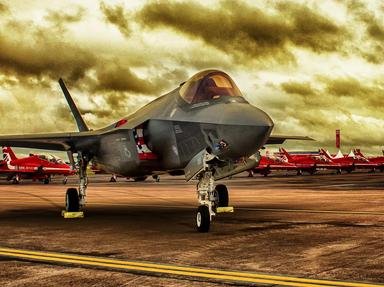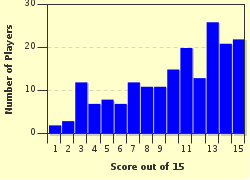Quiz Answer Key and Fun Facts
1. This aircraft was the first jet to enter service with the RAF, and also the first Allied jet. It first flew on March 5, 1943. What was it called?
2. Britain's second jet started life as an experimental aircraft. It had a distinctive twin boom fuselage. This aircraft was the Vampire, but which company produced it?
3. The Supermarine Swift was only developed as a back-up plan for the Vampire.
4. This RAF jet was actually a development of a Royal Navy aircraft. For those of us that are old enough to remember, an enduring image is of one flying between the top and bottom spans of Tower Bridge in 1968. It has been described as the most graceful jet design to leave the ground. Which much loved aircraft am I describing?
5. In 1944 The Air Ministry issued a specification for a jet powered bomber. It called for a fast high altitude aircraft. The same year, W.E.W Petter took up the challenge and designed an aircraft that was to become much loved. Over the next 50 or so years, it changed roles and was much admired. It held many records, including a height record of 65,890 ft in 1955. Which aircraft am I describing?
6. Built by Vickers, this aircraft achieved some notable firsts: the first of its type to enter service, the first to use a particular type of weapon, and the first of its type to be retired. Can you recall the name?
7. This iconic 'bird' was the first, and last, all-British supersonic jet fighter. It first flew in 1954 and was the first aircraft to achieve Mach 1 without using afterburners. Name this very much admired aircraft.
8. This plane was bought from the U.S. It replaced the Lightning as a frontline aircraft, mainly because of its longer range. It was modified to accept British-built engines. It could deploy a large variety of weapons and was capable of flying at over Mach 2. Which is it?
9. This aircraft started life as a naval bomber. The first prototype flew in April 1958 and the first Royal Navy Squadron was formed in 1961. It was to be another eight years however, before the RAF finally got them. Can you recall this aircraft's name?
10. Which bomber was affectionately known as 'the tin triangle'?
11. This ground attack aircraft was a joint effort between the UK and France. The first production models were delivered to the French Air Force in 1973. It went through several production changes and was also sold to Middle Eastern and Asian countries. Can you name it?
12. The origins of this aircraft are firmly fixed in the mid to late 1950s. A revolutionary design, it became an iconic symbol over the next 50 years. Bought by one arm of the U.S. military, it first entered service with No.1 Squadron of the RAF in 1970. There is also a naval version which saw active service in 1982. What aircraft is it?
13. In the late 1960s several countries were looking for an all-weather multi-role aircraft to replace some of their aging fleets. Initially, Belgium, The Netherlands, Germany and Italy formed a working group. At a later date, they were joined by Canada and Britain. By 1970, only Britain, Germany and Italy remained in the project. The resulting aircraft was named the Typhoon.
14. This RAF fighter was another joint project with other European nations. Designed to provide a fighter aircraft that will last well into the early years of the 21st Century, which weapons platform was delivered to the RAF in 2006?
15. This aircraft was developed to replace an aging design that went back to the Second World War, even though the aircraft it was designed to replaced carried on flying for many years. Back in the 1960s, one design was based on the Trident airliner. The final model was built around a different airliner. Which civilian craft provided the platform for this Mighty Hunter?
Source: Author
romeomikegolf
This quiz was reviewed by FunTrivia editor
trident before going online.
Any errors found in FunTrivia content are routinely corrected through our feedback system.

